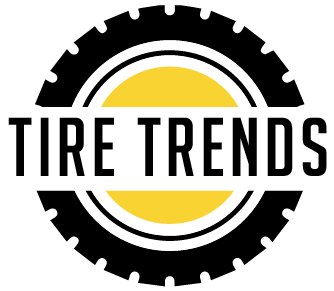Imagine cruising down the open road, the wind in your hair, and the thrill of adventure ahead. Suddenly, a menacing pothole lurks in your path, its unforgiving jaws ready to claim your unsuspecting tire. As you swerve to avoid disaster, you can’t help but wonder: just how much sidewall damage can a tire endure before it becomes a ticking time bomb?
This gripping article delves deep into the realm of tire safety, unraveling the mysteries of sidewall damage and its implications. Buckle up as we unveil the secrets beneath the rubber, ensuring your journeys remain smooth and secure.
Tire Sidewalls
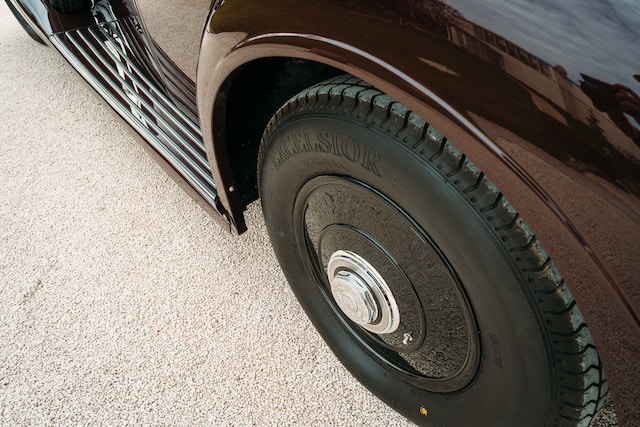
Definition and Function of Tire Sidewalls
Tire sidewalls refer to the vertical sections of a tire that connect the tread area to the bead, forming the outermost layer of the tire’s structure. They are crucial in maintaining tire integrity and supporting the vehicle’s weight.
The sidewalls transmit the forces between the tire and the road, provide stability, and absorb impacts during driving.
Materials Used in Sidewall Construction
1. Rubber Compounds: Tire sidewalls are primarily made of rubber compounds, specifically formulated to provide flexibility, strength, and resistance to external elements. These compounds usually consist of a blend of natural rubber, synthetic rubber, and other additives.
2. Reinforcing Materials: Various reinforcing materials are incorporated into the rubber compound to enhance sidewall strength. These materials can include polyester cords, nylon cords, steel belts, or aramid fibers. The specific combination of these materials depends on the tire’s intended application and performance characteristics.
Impact of Sidewall Design on Tire Performance
1. Load-Bearing Capacity: The sidewall design and construction directly influence a tire’s load-bearing capacity. Tires designed for heavy-duty applications like commercial vehicles or SUVs typically feature reinforced sidewalls to withstand heavier loads and prevent excessive flexing.
2. Ride Comfort and Handling: Sidewall design also affects a tire’s ride comfort and handling characteristics. Tires with a taller sidewall, known as high-profile tires, generally provide a more cushioned ride and better absorption of road imperfections. On the other hand, low-profile tires with shorter sidewalls offer enhanced cornering stability and more precise steering response.
3. Resistance to Sidewall Damage: The sidewall design can contribute to a tire’s resistance against damage. Sidewalls with additional layers of reinforcing materials or advanced sidewall compounds can provide increased protection against cuts, punctures, and impacts, making them suitable for rough terrain or adverse driving conditions.
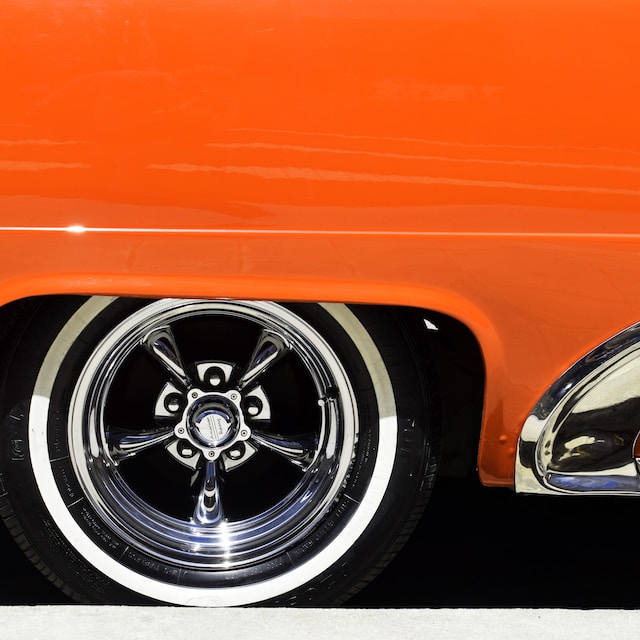
4. Noise Reduction: Some tire sidewall designs incorporate noise-canceling technology or specific patterns to minimize road noise and improve overall driving comfort.
5. Aesthetics: In addition to performance considerations, sidewall design often includes aesthetic elements such as raised lettering, sidewall graphics, or distinctive patterns. These cosmetic features contribute to the tire’s visual appeal and allow customization options for vehicle owners.
By understanding the construction, materials, and design aspects of tire sidewalls, drivers can appreciate the role they play in overall tire performance and safety. This knowledge can help them make informed decisions when selecting tires for their vehicles and recognizing signs of sidewall damage that may compromise tire safety.
Types of Sidewall Damage
Tires can experience various types of sidewall damage, compromising their structural integrity and overall safety. Understanding the different forms of sidewall damage is crucial for assessing the severity and determining appropriate actions for repair or replacement.
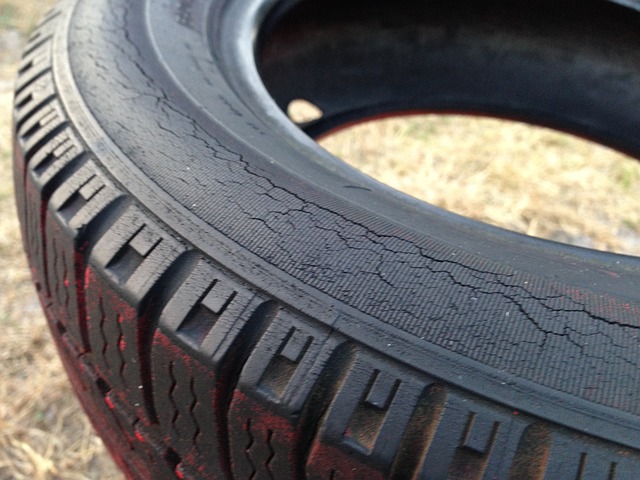
Cuts and Punctures
1. Causes and Effects of Cuts and Punctures: Sidewall cuts and punctures can occur due to several factors, including sharp objects on the road, debris, or contact with curbs. These damages can weaken the sidewall, leading to potential air leakage, reduced tire performance, and compromised safety.
2. Differentiating Minor and Major Damage: It is essential to distinguish between minor and major cuts or punctures. Superficial cuts that only affect the tire’s surface may not pose an immediate risk. However, deeper cuts or punctures that penetrate the tire layers or cause visible bulges require immediate attention as they can lead to tire failure.
Sidewall Bulges and Bubbles
1. Reasons for Bulges and Bubbles: Bulges and bubbles on the sidewall often result from impacts or internal tire damage. They typically indicate weakened internal structures, such as separated plies or broken cords, which compromise the tire’s structural integrity. Factors such as overloading, underinflation, or hitting potholes can contribute to the formation of bulges and bubbles.
2. Identifying Dangerous Bulges and Bubbles: Not all bulges and bubbles are equally hazardous. Smaller, localized bulges or bubbles may indicate less severe damage, while larger, irregularly shaped bulges are more concerning. It is crucial to carefully inspect the tire, as severe bulges or bubbles can lead to sudden tire failure and potential accidents.
Sidewall Cracks and Weathering
1. Effects of Aging and Environmental Factors: Over time, sidewalls can experience cracks and weathering due to factors like UV exposure, extreme temperatures, and chemical reactions. Cracks can compromise the tire’s structural integrity, reducing its ability to withstand stress and impacts.
2. Recognizing Signs of Sidewall Cracks: Sidewall cracks often appear as fine lines or fissures on the tire surface. They can vary in length and depth, and their presence indicates potential weakness in the sidewall. Regular inspections are essential to detect and monitor the progression of sidewall cracks.
Determining Tire Safety after Sidewall Damage
After identifying sidewall damage on your tire, it is crucial to assess its impact on the overall safety of the tire. Several factors come into play when determining whether a tire is still safe to use or requires immediate repair or replacement. Understanding these considerations can help you make an informed decision and prioritize your safety on the road.
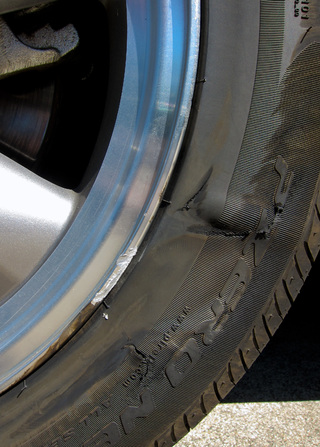
Factors Influencing Safety Considerations
1. Location and Extent of Damage: The location and extent of sidewall damage play a significant role in determining tire safety. Damage closer to the tread or larger in size is generally more critical and poses a higher risk. Sidewall damage near the tire bead or sidewall bulges and bubbles can compromise the tire’s structural integrity.
2. Type of Damage: Different types of sidewall damage have varying levels of severity. Cuts and punctures that penetrate the sidewall pose a greater risk than superficial surface scratches. Sidewall cracks and weathering can weaken the tire over time and should be carefully evaluated.
3. Tire Age and Condition: The age and overall condition of the tire are important factors to consider. As tires age, they become more susceptible to damage and degradation. A damaged sidewall on an older tire may indicate accelerated wear and potential safety concerns.
Consulting with Professionals
When in doubt about the safety of your tire after sidewall damage, it is recommended to consult with a professional tire technician or an experienced mechanic.
They can perform a thorough inspection, assess the severity of the damage, and provide expert advice on whether the tire can be safely repaired or needs to be replaced.
Understanding Tire Repair and Replacement Options

1. Tire Repair: In some cases, a professional can repair minor sidewall damage using industry-approved methods. However, not all sidewall damage can be safely repaired, and repairability depends on various factors such as the damage’s size, location, and severity.
It’s important to note that repairing a damaged sidewall is not always a guaranteed solution, and the repaired tire may have limitations or a reduced lifespan.
2. Tire Replacement: When the sidewall damage is significant, or the tire is deemed unsafe for repair, replacing the tire becomes necessary. Replacing tires in pairs or sets is generally recommended to maintain balanced performance and safety.
Consultation with a tire professional can help determine the most suitable replacement tire based on your driving needs and budget.
Recommendations Based on Damage Severity Levels
To provide a clearer understanding of what actions to take based on the severity of sidewall damage, let’s categorize the levels of damage and corresponding recommendations:
1. Minor Damage: Superficial scratches or small nicks on the sidewall can often be safely monitored. Regularly inspect the tire for any signs of progression or changes in performance. If no further issues arise, the tire may continue to be used. However, it’s essential to exercise caution and closely monitor the damaged area.
2. Moderate Damage: Cuts or punctures that are deeper or larger in size require professional evaluation. Depending on the specific circumstances, the tire technician may recommend repair if it meets the repairability criteria. If repair is impossible or not advised, replacing the tire is the safest action.
3. Severe Damage: Sidewall bulges, bubbles, or extensive cracks indicate severe damage and an increased risk of tire failure. These conditions typically necessitate immediate tire replacement, compromising the tire’s structural integrity and posing a significant safety hazard.
Remember, safety should always be the top priority when dealing with sidewall damage. It is crucial to follow the guidance of professionals and make informed decisions based on the severity, location, and type of damage to ensure your vehicle’s continued safety and reliability.
Preventing Sidewall Damage

After encountering sidewall damage on a tire, it is crucial to assess its safety before deciding whether to continue using it or seek a replacement. Several factors come into play when making this determination, and it is advisable to consider professional advice in certain cases.
Factors Influencing Safety Considerations
Depth and Length of Damage
The depth and length of sidewall damage directly affect the tire’s structural integrity. Deeper and longer cuts or punctures pose a higher risk of compromising the tire’s strength, potentially leading to sudden tire failure.
Position of Damage
The position of the sidewall damage also plays a role in determining safety. Damage closer to the tire’s shoulder or sidewall flexing areas may significantly impact performance and safety more than damage occurring in less critical areas.
Tire Age and Wear
Older tires or those nearing the end of their expected lifespan are generally more susceptible to sidewall damage. Aging and wear can make the sidewall material more brittle and prone to cracks or bulges, further reducing their overall safety.
Tread Wear and Condition
The condition of the tire’s tread should be evaluated alongside sidewall damage. Excessive tread wear, uneven wear patterns, or other tread-related issues may indicate a tire nearing the end of its usable life, warranting replacement.
Consulting with Professionals
When confronted with sidewall damage, consulting with a professional tire expert or a reputable tire service provider is highly recommended. These professionals have the expertise and experience to accurately assess the safety of a damaged tire, considering various factors specific to your situation. Their assessment can provide valuable guidance and help you make an informed decision regarding tire repair or replacement.
By considering these factors, seeking professional advice, and understanding repair and replacement options, you can make an informed decision regarding the safety of a tire with sidewall damage. Prioritizing safety ensures a smooth and secure driving experience, mitigating the risks associated with compromised tire integrity.
Frequently Asked Questions
1. Can sidewall damage be repaired?
While minor sidewall damage can sometimes be repaired, replacing a tire with significant sidewall damage is generally recommended. Sidewalls play a crucial role in supporting the vehicle’s weight and maintaining tire integrity; any compromise to their structure can pose safety risks. It is advisable to consult a professional tire technician who can assess the damage and provide appropriate recommendations.
2. Are there any warning signs of impending sidewall failure?
Yes, there are certain warning signs that may indicate potential sidewall failure. These include bulges, bubbles, deformities on the sidewall, visible cracks or cuts, and irregular wear patterns. Additionally, if you experience frequent loss of tire pressure or notice vibrations while driving, it could indicate sidewall damage. It is important to address these signs promptly by having the tires inspected by a professional.
3. What is the average lifespan of a tire’s sidewall?
The lifespan of a tire’s sidewall depends on various factors, including the tire’s quality, construction, usage conditions, and maintenance practices. On average, a well-maintained tire’s sidewall can last 5 to 10 years.
However, it is essential to regularly inspect the sidewalls for signs of damage or wear and replace the tire if necessary, even if it hasn’t reached its maximum lifespan.
4. Can sidewall damage cause tire blowouts?
Yes, sidewall damage can potentially lead to tire blowouts. When the sidewall is weakened or compromised, it may not be able to withstand the internal pressure and stresses exerted on the tire during driving. This can result in a sudden loss of air pressure, leading to a blowout.
It is crucial to take sidewall damage seriously and address it promptly to prevent dangerous situations on the road.
5. Are certain tires more prone to sidewall damage?
While all tires are susceptible to sidewall damage, certain factors can make them more prone to such issues. Low-quality or older tires, tires with inadequate sidewall reinforcement, and tires that are underinflated or subjected to harsh driving conditions, such as rough roads or extreme temperatures, may have an increased risk of sidewall damage.
Choosing high-quality tires that are appropriate for your vehicle and usage conditions can help mitigate the risk.
Conclusion
In conclusion, understanding the potential risks and safety considerations associated with sidewall damage is crucial for maintaining tire integrity and ensuring road safety. This article has delved into the various types of sidewall damage, the severity scale for assessing damage, determining tire safety post-damage, and preventative measures, and provided answers to frequently asked questions.
By prioritizing regular tire inspections, seeking professional advice when necessary, and practicing safe driving habits, you can minimize the risk of sidewall damage and promote a safer driving experience. Remember, your tire’s sidewall health plays a vital role in maintaining overall tire safety.
